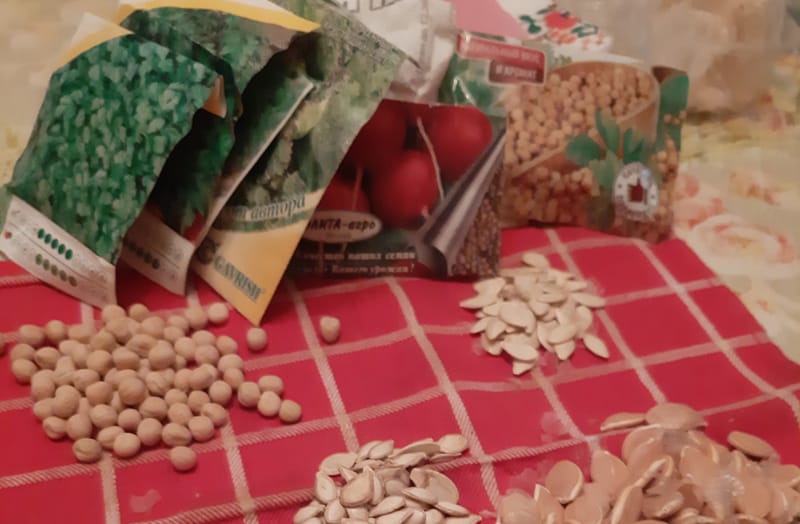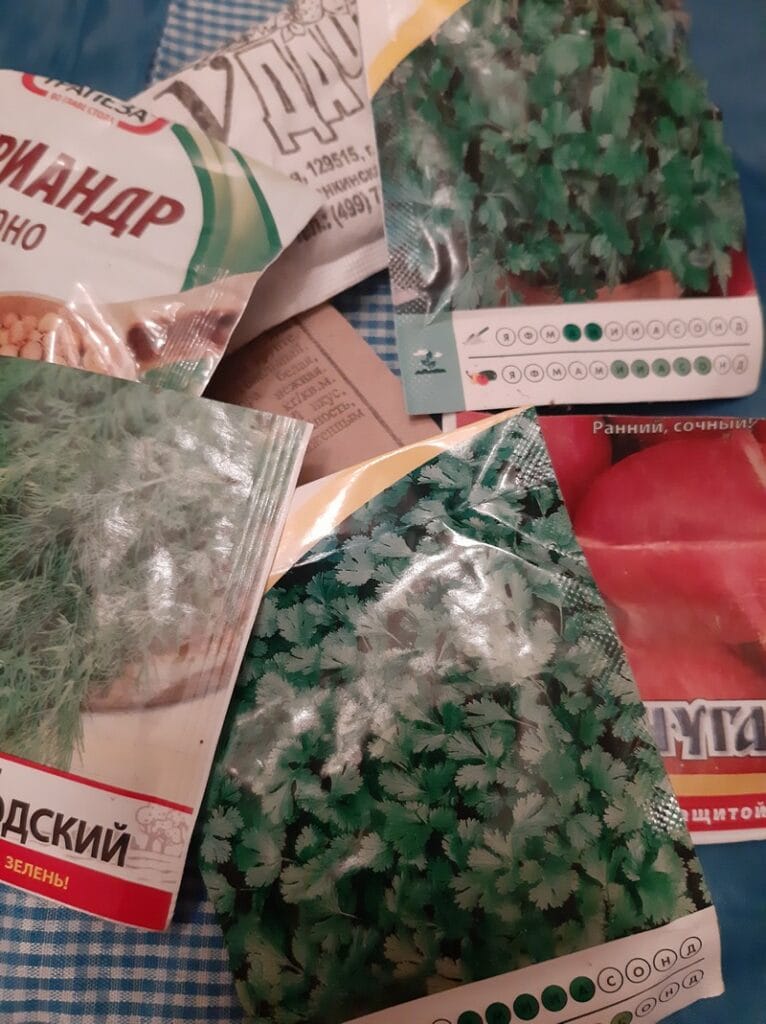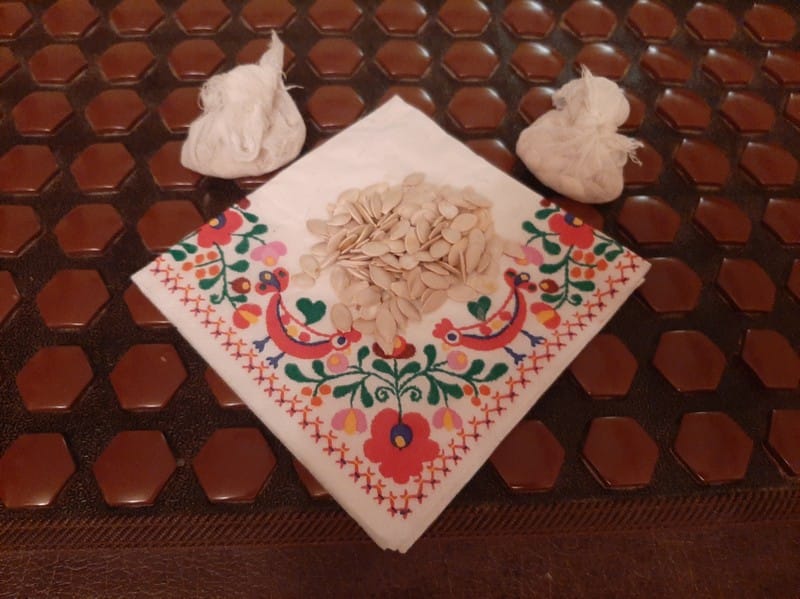Preparing seeds for planting
[ad_1]
The New Year’s holidays are gone. But for gardeners, the new year begins with planting seeds for seedlings. Although, perhaps, a little earlier – when the selection and preparation of seeds begins. After all, according to experts, 50 percent of the crop depends on the quality of the seeds. Today we’ll talk about how to check and process seeds for seedlings in advance.

I don’t know about you, but when it’s time to get the seeds, I always remember stories about the war. After all, even in a difficult time, people were starving, but they took care of precious grains. Without losing hope, they thought about a new life, about the onset of spring and a new harvest. What it will be depends largely on the seed. And it’s not for nothing that the proverb says “A good seed is a good seed.”
What is happening now in the open field seed market? As before, seed buyers are led by beautiful bags and advertising, and the quality of seeds sometimes leaves much to be desired.

A large amount of seed is grown from southern producers, and then bought in bulk and packaged in bags.
Sometimes the buyer does not know whether the control of the batch of grown seeds and their disinfection was carried out, as was done earlier in specialized farms. And many gardeners grab seeds cheaper, not caring about their quality.
Meanwhile, diseases such as phomosis, bacteriosis and viral diseases are transmitted with seeds. Many of them settle in our gardens, having arrived from other regions, and it is very difficult to get rid of them. It is clear that this reduces the quantity, quality and ability to keep the crop. So let’s talk about how at home you can use pre-sowing seed treatment methods available to every gardener. Indeed, thanks to small tricks, you can almost double the yield, and limit the spread of diseases.
Seed preparation methods can be different and largely depend on the biology of the crop and the conditions in which the seeds were grown. For example, seeds harvested in adverse weather, as well as stored in cold rooms, have low sowing qualities, to improve which it is useful to warm the seeds. Sometimes you can apply several methods of processing the same seeds. At the same time, you need to know that different types of processing are associated with the awakening of seeds, the activation of biological processes, or a change in the shells. So, in order not to harm irradiated tomato seeds, they cannot be treated with acid. And seeds with minor injuries that violated the integrity of the shell are dangerous to pickle.
Let’s start with the most affordable types of seed treatment.
Calibration
This is sorting seeds by size. After all, even within a variety, seeds vary in size.

It is noticed that seeds of the same size give even shoots. Therefore, divide large and very large seeds of pumpkin, zucchini, beans, peas, cucumbers, beets and radishes into different fractions and sow each of them separately. Small-seeded crops can be sorted with a plastic electrified stick. To do this, scatter the seeds in a thin layer on a piece of paper. Then rub the stick (you can take a plastic toothpick) with a cloth and pass it over the seeds at a height of 1-2 cm. Empty, lifeless seeds are attracted to it like iron filings to a magnet.
More seeds are selected by density in a 3 – 5% solution of table salt (30 – 50 g per 1 liter of water). The floating seeds are drained with water.
warming up
There are several ways to warm seeds. It is useful to warm dry seeds of cucumbers, pumpkins, zucchini, squash for 2-4 hours at a temperature of 50-60 degrees in the oven, on the stove, stove, near the central heating battery. A gradual increase in temperature is more favorable for seeds. Stir the seeds so they don’t steam. On the stove, it is better to warm the seeds in gauze bags, turning them over every half hour. Of course, with the current state of technology, there are various devices, for me, for example, the role of the oven is performed by an infrared mattress with adjustable temperature.

And some avid gardeners carry cucumber seeds in the inside pocket of a shower jacket for several months, warming them with their own bodies, as in the old days, until steady heat comes on the street. They say that from this the harvest was larger and the cucumbers were sweeter. Warming up the seeds before sowing increases the friendliness of the emergence of seedlings, contributes to the formation of a greater number of female flowers, especially in cucurbits.
soaking
This technique is often used by gardeners with vegetable seeds that have a dense shell or contain essential oils, due to the content of which they germinate poorly. It has been noticed that in parsley and carrots, wetted seeds germinate on the 5th – 7th day, and not wetted – after 14 – 20. The seeds of beets, spinach and onions have a dense shell. They are also recommended to be soaked before sowing. A good effect is obtained by soaking the seeds in a solution of potassium permanganate (0.5 – 1%), copper sulfate (0.05 – 0.001%), boric acid (0.005 – 0.05%) and baking soda (0.5 – 1%) .
Significantly increased energy and germination of seeds when soaked overnight with vitamins PP (nicotinic acid) and vitamin B (thiamine). Just 100 mg per 1 liter of water is enough. Soaking the seeds of carrots, beets and onions is useful in a solution with vitamins and growth stimulants. Seeds are immersed in a warm solution. Trace elements dissolve at a water temperature of +45 degrees.
bubbling
This procedure is similar to soaking, only in oxygenated water, and is useful for seeds with reduced germination and viability.
For this procedure, you need a bank of water with a temperature of about 20 degrees and an aquarium compressor. Seeds in gauze bags, stirring slightly, lower into the water. The duration of such seed treatment for onions and beets: 18 – 24 hours; cucumber, tomato: 18 – 20; pepper, spinach: 24 – 36; peas: 8 – 10, radish: 8 – 12, lettuce: 10 – 15; dill: 13 – 15; parsley: 12 – 18; carrots: 15 – 18. After this time, the seeds are taken out, dried to flowability and brought into moist soil.
Germination
It is convenient to germinate seeds in wide pallets. Wet filter paper is placed in them, seeds are laid out (you can dry them) and covered with wet paper and film on top. The pallet is placed near the battery. When germinating, it is necessary to provide the seeds with moisture and oxygen access, slightly opening the film and wetting the paper as necessary.
Seeds of beets, tomatoes, carrots, peppers, celery, parsnips, parsley, corn require 4-6 days to germinate. And the germination of black onions can be accelerated if the seeds are previously kept in water heated to 40 degrees. The seeds of radishes, turnips and radishes need to be germinated only if they are late with sowing.
So it is from the first correct steps of gardeners that a good harvest is laid. We’ll talk about the next steps later. The main thing is not to miss the time and not to ignore the most important stages of caring for seeds and seedlings. Have a good harvest in the new year!
Alina Fedorova.
Author’s photo
[ad_2]
Source link








